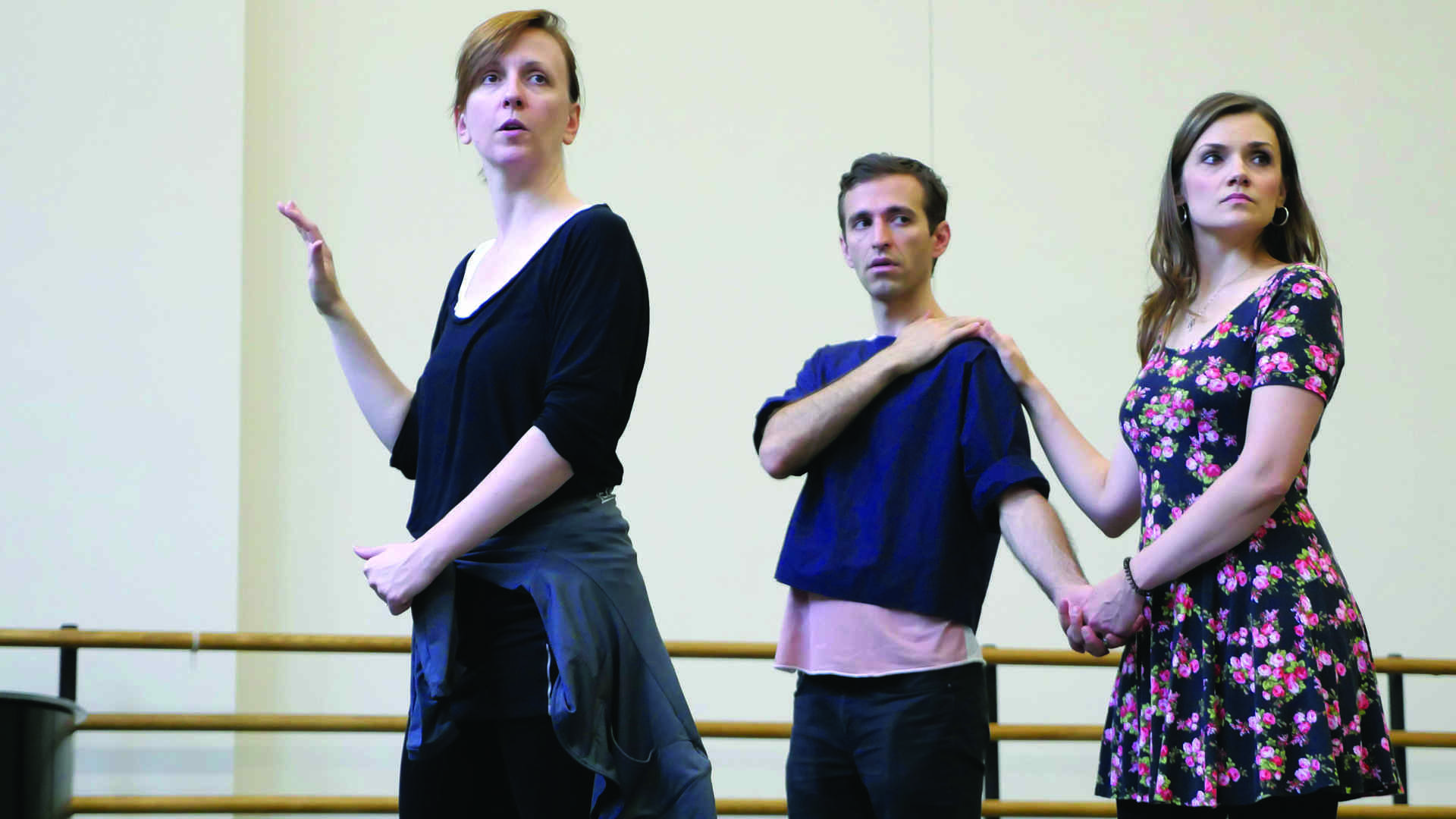
When Jessica Lang (BFA ’97, dance) was commissioned to choreograph Pergolesi’s Stabat Mater for the Glimmerglass Festival in 2013, she was excited to find out that the conductor would be a Juilliard acquaintance, Speranza Scappucci (Certificate ’95, piano; MM ’97, accompanying). This fall the two are reuniting for a new staging of the Stabat Mater that will be presented by Lincoln Center’s White Lights Festival (Nov. 1–2). And this time, even more alums are involved, including costume designer Bradon McDonald (BFA ’97, dance) and some of Lang’s dancers. Lang, who danced with Twyla Tharp’s company before starting her own, Jessica Lang Dance, spoke recently about the upcoming performance, collaborating with classmates, and her career trajectory.
Is the choreography for the White Lights Stabat Mater the same as the one you did for the Glimmerglass Festival?
It’s all new choreography. There was dance in the original version, but that had young artists had different levels of background in movement. It was very different creating on them than on my dancers, who are professionals. The nine dancers in my company are all in it and three of them—Kana Kimura (BFA ’05), John Harnage (BFA ’14), and Eve Jacobs (BFA ’14)—are Juilliard alums.
Did you know Bradon and Speranza well here?
Bradon was one of my best friends at Juilliard. Speranza and I were friendly but didn’t really know each other well. But when we were both hired to work on the production at Glimmerglass, there was an instant connection, an “I know you, yay we’re together” kind of energy as well as a mutual respect and understanding.
What’s it like collaborating with former classmates?
There’s a shorthand and a trust. We push each other. There are definitely some tricky conversations, but there’s so much fun too. It’s work but it’s not.
Did you always know you wanted to choreograph?
I went to Juilliard expecting to be a performer. I thought making dances was interesting and I liked doing it, but I didn’t really experience confidence in investigating making dances until I studied with [former Juilliard faculty member] Bessie Schonberg. But once I started dancing professionally, I realized I was very much into the creative process, and I didn’t like just being a performer. I switched gears completely when I was 24 or 25 and didn’t look back, and this May, the hundredth dance that I will have made in 18 years will be performed.
So in a way, none of the three of you are doing now what you came to Juilliard to study (dancing in the case of you and Bradon, playing piano as opposed to conducting in the case of Speranza).
I think if you look back at who we were as students you’ll see the origins of what we’re doing now. Bradon was always creative—even though he was a dancer, he was always making outfits and things and was very craft-y. He and I remained close throughout our time as dancers and then when he transitioned into fashion and I started my own company, he was an obvious choice when I started to hire costume collaborators. I want to say we’re close to double digits in the number of productions we’ve done together—he does as many costumes for me as I can offer.
What’s next?
My company’s going on tour for a few weeks—we leave tomorrow for Long Beach, California. And then when we come back, Stabat Mater!
Susan Jackson is the editor of the Journal